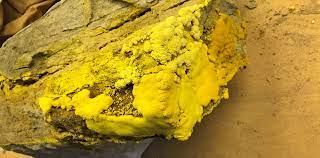
- This event has passed.
Enrichment? HALEU? Virtual Scoping Meetings Announced
June 21, 2023 @ 4:00 pm - 5:00 pm

The DOE has issued a notice of intent for a High-Assay Low-Enriched Uranium (HALEU) Availability Program by launching the scoping process for an environmental impact statement.
Enriching uranium to make HALEU poses serious nuclear weapons proliferation risks and puts us in danger. The fuel would be enriched to bomb grade or near bomb grade—20% uranium 235, supposedly for nuclear power, but easily shifted to weapons
There will be three virtual meetings on June 21st, at 6pm, 8pm, and 10pm ET (4pm, 6pm, 8pm MT) . Register HERE.
DOE will “provide information on the NEPA process and proposed action, gather oral comments on the scope of the draft EIS, and enhance opportunities for public participation.”
From the Notice of Intent…
The development of a commercial HALEU fuel cycle would involve: (1) uranium ore production ( e.g., in situ-recovery), (2) conversion of the uranium ore into enrichment feed (converting the uranium ore into hexafluoride suitable for enrichment), (3) enrichment to HALEU (in particular, HALEU enriched to at least 19.75 and less than 20 weight percent U–235), (4) deconversion (conversion of the uranium hexafluoride into forms suitable for fuel fabrication), (5) transportation services for HALEU ( e.g., from the enrichment site to the deconversion site), and (6) storage capability. The EIS will evaluate implementation of the Proposed Action of facilitating the commercialization of HALEU production and DOE’s acquisition of HALEU, including the direct and reasonably foreseeable indirect effects of that acquisition.

The DOE has issued a notice of intent for a High-Assay Low-Enriched Uranium (HALEU) Availability Program by launching the scoping process for an environmental impact statement.
Enriching uranium to make HALEU poses serious nuclear weapons proliferation risks and puts us in danger. The fuel would be enriched to bomb grade or near bomb grade—20% uranium 235, supposedly for nuclear power, but easily shifted to weapons
There will be three virtual meetings on June 21st, at 6pm, 8pm, and 10pm ET (4pm, 6pm, 8pm MT) . Register HERE.
DOE will “provide information on the NEPA process and proposed action, gather oral comments on the scope of the draft EIS, and enhance opportunities for public participation.”
From the Notice of Intent…
The development of a commercial HALEU fuel cycle would involve: (1) uranium ore production ( e.g., in situ-recovery), (2) conversion of the uranium ore into enrichment feed (converting the uranium ore into hexafluoride suitable for enrichment), (3) enrichment to HALEU (in particular, HALEU enriched to at least 19.75 and less than 20 weight percent U–235), (4) deconversion (conversion of the uranium hexafluoride into forms suitable for fuel fabrication), (5) transportation services for HALEU ( e.g., from the enrichment site to the deconversion site), and (6) storage capability. The EIS will evaluate implementation of the Proposed Action of facilitating the commercialization of HALEU production and DOE’s acquisition of HALEU, including the direct and reasonably foreseeable indirect effects of that acquisition.

The DOE has issued a notice of intent for a High-Assay Low-Enriched Uranium (HALEU) Availability Program by launching the scoping process for an environmental impact statement.
Enriching uranium to make HALEU poses serious nuclear weapons proliferation risks and puts us in danger. The fuel would be enriched to bomb grade or near bomb grade—20% uranium 235, supposedly for nuclear power, but easily shifted to weapons
There will be three virtual meetings on June 21st, at 6pm, 8pm, and 10pm ET (4pm, 6pm, 8pm MT) . Register HERE.
DOE will “provide information on the NEPA process and proposed action, gather oral comments on the scope of the draft EIS, and enhance opportunities for public participation.”
From the Notice of Intent…
The development of a commercial HALEU fuel cycle would involve: (1) uranium ore production ( e.g., in situ-recovery), (2) conversion of the uranium ore into enrichment feed (converting the uranium ore into hexafluoride suitable for enrichment), (3) enrichment to HALEU (in particular, HALEU enriched to at least 19.75 and less than 20 weight percent U–235), (4) deconversion (conversion of the uranium hexafluoride into forms suitable for fuel fabrication), (5) transportation services for HALEU ( e.g., from the enrichment site to the deconversion site), and (6) storage capability. The EIS will evaluate implementation of the Proposed Action of facilitating the commercialization of HALEU production and DOE’s acquisition of HALEU, including the direct and reasonably foreseeable indirect effects of that acquisition.
